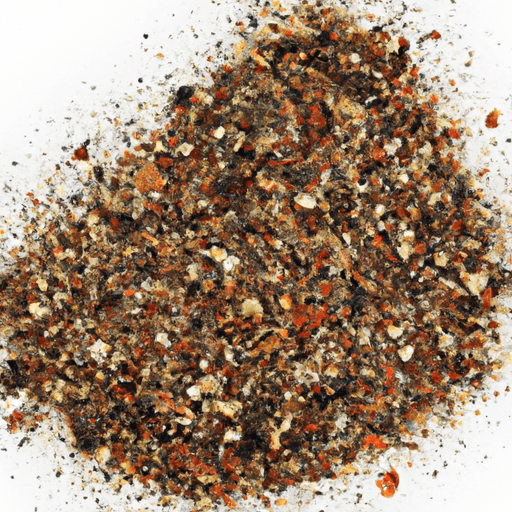Old Bay Seasoning: Adding a Timeless Twist to Your Dishes
If you’re a fan of bold and zesty flavors, then you’re in for a treat with Old Bay seasoning. This iconic spice blend has been a staple in kitchens across America for decades, bringing a unique and unforgettable taste to a wide range of dishes. In this blog post, we’ll dive into the fascinating world of Old Bay seasoning, exploring its taste profile, common uses, nutritional value, and intriguing history.
Unveiling the Flavor Profile
Old Bay seasoning is renowned for its distinctive flavor profile that combines various spices, resulting in a savory, slightly spicy, and herbaceous blend. The taste is characterized by a harmonious marriage of celery salt, paprika, black pepper, mustard, and other secret ingredients. The exact recipe for this famous blend has been a closely guarded secret since its creation.
Versatile Uses in the Kitchen
Old Bay seasoning’s versatility in the kitchen knows no bounds. It works wonders as a seafood seasoning, adding a burst of flavor to crab cakes, shrimp boils, clam chowders, and fish tacos. Its tangy and spicy notes also make it a popular choice for seasoning potato dishes such as fries, roasted potatoes, and potato salads.
But don’t let its name deceive you. Old Bay seasoning isn’t just limited to seafood and potatoes! It can be used to enhance the flavor of grilled meats, roasted vegetables, soups, stews, and even Bloody Mary cocktails. The possibilities are virtually endless when it comes to incorporating this versatile spice blend into your culinary creations.
Nutritional Value
In addition to its bold taste, Old Bay seasoning offers some nutritional benefits as well. While it is primarily used in small amounts for flavoring, it does contain some essential minerals. For instance, a teaspoon of Old Bay seasoning provides a dash of calcium, iron, and potassium. However, it’s important to note that due to its relatively high sodium content, moderation is key when using this spice blend.
A Taste of History
To truly appreciate Old Bay seasoning, we must explore its rich history. This beloved blend was first created in the late 1930s by a German immigrant named Gustav Brunn. He settled in Baltimore, Maryland, and introduced this unique spice blend to the local seafood scene. Old Bay seasoning quickly gained popularity, becoming synonymous with the flavors of the Chesapeake Bay region.
Over the years, Old Bay seasoning has garnered a loyal following, with many families passing down their favorite recipes from generation to generation. Its timeless charm lies in its ability to bring people together, evoking memories of summer seafood feasts and backyard cookouts.
Fun Facts about Old Bay Seasoning
- Old Bay seasoning was named after a passenger ship, the SS Old Bay Line, which traveled along Maryland’s Chesapeake Bay in the early 1900s.
- It is estimated that over 75 million ounces of Old Bay seasoning are sold annually.
- Old Bay seasoning is not only a culinary delight but also finds its way into various snack foods like chips, popcorn, and even beer.
- The spice blend gained popularity nationwide when it was used as the secret ingredient in the famous “Bloomin’ Onion” appetizer at the Outback Steakhouse chain in the 1980s.
So the next time you’re looking to add a burst of flavor to your dishes, reach for the iconic yellow and blue canister of Old Bay seasoning. With its unforgettable taste, versatile uses, and fascinating history, this spice blend is sure to elevate your culinary creations to new heights. Embrace the flavors of the Chesapeake Bay and savor the timeless magic of Old Bay seasoning!
Origin: Old Bay seasoning is a blend of herbs and spices that originated in the United States. It was created in 1939 by a German immigrant named Gustav Brunn, who settled in Baltimore, Maryland. The seasoning was initially used by crab shacks in the Chesapeake Bay area but gained popularity throughout the United States over time.
Common Uses: Old Bay seasoning is primarily used as a flavor enhancer for seafood dishes such as steamed crabs, shrimp boils, and fish cakes. It is also used in other dishes like soups, stews, salads, roasted vegetables, and even on snacks like popcorn and french fries.
Nutritional Benefits: Old Bay seasoning is low in calories and contains various beneficial herbs and spices. It is free of fat and cholesterol. The ingredients typically include celery salt, red and black pepper, paprika, mustard, cloves, allspice, and ginger, among others.
Unique Properties: Old Bay seasoning is known for its distinctive flavor profile, combining savory, spicy, and slightly sweet notes. It has a complex and robust taste that is often described as zesty, aromatic, and slightly tangy. The blend is particularly well-known for its celery-dominated flavor, which is a result of the celery salt used in the mix.
Historical Significance: Over the years, Old Bay seasoning has become an iconic ingredient in American cuisine, particularly in the Mid-Atlantic region. It has maintained its popularity and cultural significance, with many considering it a symbol of Maryland’s culinary heritage. The blend’s versatility and unique flavor profile have made it a staple in many American kitchens, and it has gained recognition beyond seafood dishes.




Use the share button below if you liked it.
It makes me smile, when I see it.